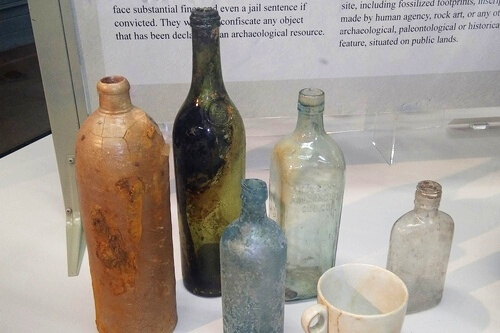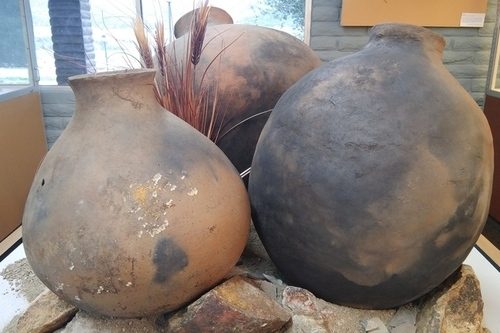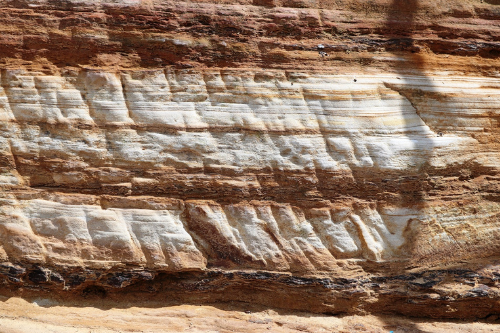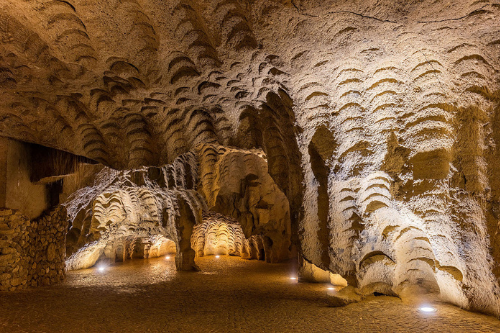
The Wonderful World of Cave Archaeology
The Wonderful World of… is a monthly blog focusing on some of the many themes, concepts, and sub-disciplines related to the fascinating world of Southern Californian archaeology.
Why Do Archaeologists Study Caves?
Archaeologists have many reasons to study and survey cave sites. While humans did not generally live in them, (those types of ‘caves’ are called rock shelters) we know that caves have been used for a variety of purposes throughout time. European archaeologists began studying caves in the 1800s but mainly to document cave paintings. Much has been learned about past societies by studying cave paintings from around the world. Curiosities and scientific innovation have made it possible for archaeologists to expand the subfield of cave archaeology.
Cave Archaeology in the United States
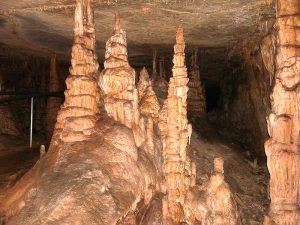
Mammoth Cave (National Park) in Kentucky is one of the earliest caves investigated by North American archaeologists. Before it was examined by trained archaeologists, the cave was known to have been used by prehistoric societies, and then eventually, for mining and tourism by European colonists. Even though it had been occupied by many groups of people, an interest in scientific cave archaeology did not develop in North America until the 20th century. To learn more about the incredible history of Mammoth Cave, visit the National Park Service.
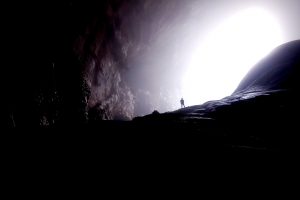 The Cave Research Foundation project was started in the 1960s by a pioneer archaeologist, Patty Jo Watson. Much of her work focused on dark zone cave archaeology. Dark zones help decipher the difference between caves and rock shelters, as inhabitants generally would not live in a dark zone. Rock shelters are cave-like with large openings that allow light to enter the shelter, making them ideal places for occupation. Dark zones found in caves are much more elusive, typically with long and narrow corridors that never see the light of day. Even though people did not live in these dark zones, there is abundant evidence that they visited and used them for many different purposes. Some of Watson’s findings included prehistoric mining activity, textiles, plant remains, and burial chambers. Evidence of early cultivated plants was discovered, which led to the creation of the Shell Mound Archaeological project (SMAP). This project led to the interdisciplinary study of Kentucky’s Green River Archaic sites in 1972. Watson shifted the way agricultural history was viewed and defined in North America. Methodologies and techniques from these projects are still in use today and have contributed much to the field of archaeology.
The Cave Research Foundation project was started in the 1960s by a pioneer archaeologist, Patty Jo Watson. Much of her work focused on dark zone cave archaeology. Dark zones help decipher the difference between caves and rock shelters, as inhabitants generally would not live in a dark zone. Rock shelters are cave-like with large openings that allow light to enter the shelter, making them ideal places for occupation. Dark zones found in caves are much more elusive, typically with long and narrow corridors that never see the light of day. Even though people did not live in these dark zones, there is abundant evidence that they visited and used them for many different purposes. Some of Watson’s findings included prehistoric mining activity, textiles, plant remains, and burial chambers. Evidence of early cultivated plants was discovered, which led to the creation of the Shell Mound Archaeological project (SMAP). This project led to the interdisciplinary study of Kentucky’s Green River Archaic sites in 1972. Watson shifted the way agricultural history was viewed and defined in North America. Methodologies and techniques from these projects are still in use today and have contributed much to the field of archaeology.
How Do Archaeologists Study Caves?
Before archaeologists enter a cave they must prepare themselves by doing extensive research on any related documentation. Maps and primary documents like journals, newspapers, and even local folklore are very useful when an archaeologist is preparing to examine a cave site. Any bit of information can enhance the research and give archaeologists a more complete history of what they may encounter during their expedition.
Cave sites can be very fragile, and this requires archaeologists to develop and use new technologies while investigating them. While some common methods are still used, when working in dark zones (and caves in general), the environment and absence of light creates unique challenges for the documentation of cultural resources and overall mapping of sites. Three dimensional scanners and software (and a lot of time and hard work) allow archaeologists unique opportunities to explore sites without disturbing cultural heritage or landscapes.
Cave Archaeology in Southern California

There have not been many documented cave sites in Southern California. One that is well known can be found on San Nicolas Island. This island is the most remote of the Channel Islands, off the coast of Southern California. This island and the caves here have been made popular by the young adult novel, Island of the Blue Dolphins by Scott O’Dell. Navy archaeologist Steve Schwartz spent 25 years researching and surveying the island. A discovery was made of a cave that had previously been covered by sand and sediment. Many prehistoric cultural resources have been found by archaeologists on the island, but due to the sensitive nature of these scared objects, excavation on the island has been halted indefinitely to comply with the Native American Graves Protection and Repatriation Act.
Cave Archaeology in San Diego County
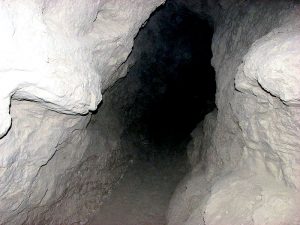
These are the Arroyo Tapiado Carrizo Badlands mud caves. They are a popular feature in nearby Anza Borrego Desert State Park and are part of one of the largest mud cave systems in the world with 22 caves and 9 slot canyons. These mud caves were created when water flowed through a thick deposit of silt. Some of the caves are actually quite large, with high ceilings and wide openings. Others are very narrow. Past archaeological excavations in the area have uncovered fossils but not much else is known about archaeology and the mud caves. Entering the caves can be dangerous, and if you do decide to visit, be sure to do your research before you go.
Conclusion
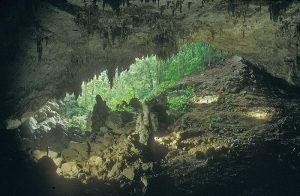
Caves are often untouched by humans because of their locations and elusive dark zones, but people have benefited from their existence in a variety of ways. Mining raw materials, tourism, agricultural cultivation, ceremonial purposes, and shelter are just some of the uses people have had for caves over time. Cave archaeology is still a relatively new sub-discipline in the field, and as technologies advance, their discovery and exploration will continue to grow. Using science and archaeological techniques and practices brings us closer to understanding past societies but also the natural world.
by Jessica McPheters, Collections Manager


